In late September 2015 I traveled to the Carolinas to part take in the annual NAMA foray held in Asheville NC. I also visited my mushroom friends Todd Elliott in Union Mills NC and Tradd & Olga Cotter of Mushroom Mountain, Liberty SC who took the time to take me out in the woods for mushroom hunting. Unfortunately I got to the Carolinas at the end of a extended dry spell that was followed by intense rains and flooding. Still we ran into abunch of interesting and beautiful mushrooms, some of them easily overseen when the forest are full of mushrooms. The Cordyceps found on that trip have their own entry in my Cordyceps blog.
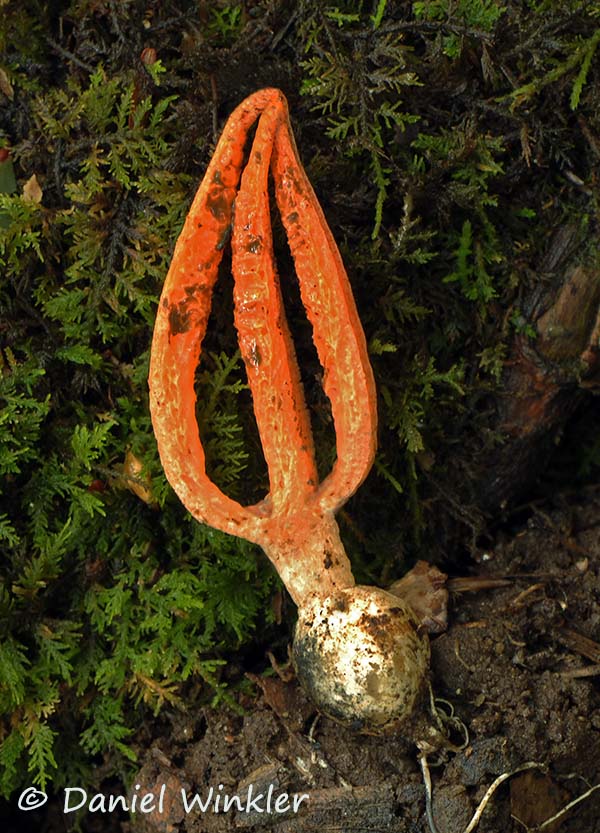
Pseudocolus fusiformis, an introduced stinkhorn gone wild in Eastern North America, Asheville NC. I grew this stinkhorn from the "egg" I found two days before fruiting.
I try to retain as much rhizomorph as possible when digging out and place the egg carefully in soaked paper towel/ toilet paper in a plastic water bottle whose neck I cut off. This way i fruited about 4 species of stinkhorns while traveling, success rate about 70%.
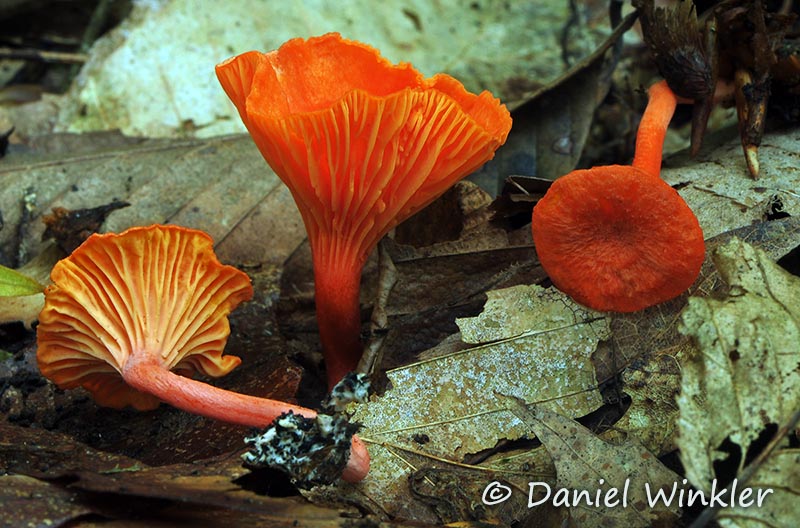
Cantharellus cinnabarinus, the Cinnabar Chanterelle, a beautiful edible seen near Asheville, NC.
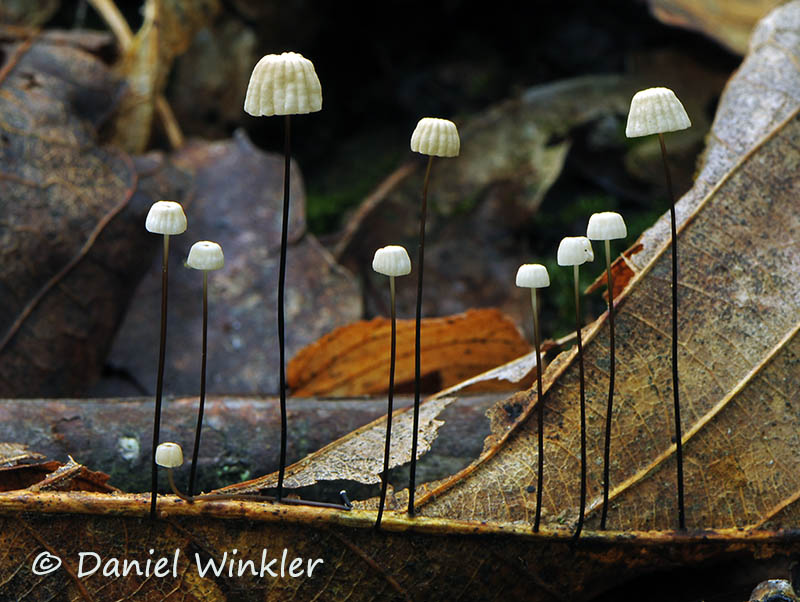
Marasmius nicely lined up on the mid rib of a leaf. Seen near Asheville NC.

What an attractive Phlebia!
Wow, I never thought I would utter "attractive" and "Phlebia" in the same sentence! Anyway, Phlebia incarnata has a great color and check out the cool hymenium structure. Seen in Union Mills, NC.
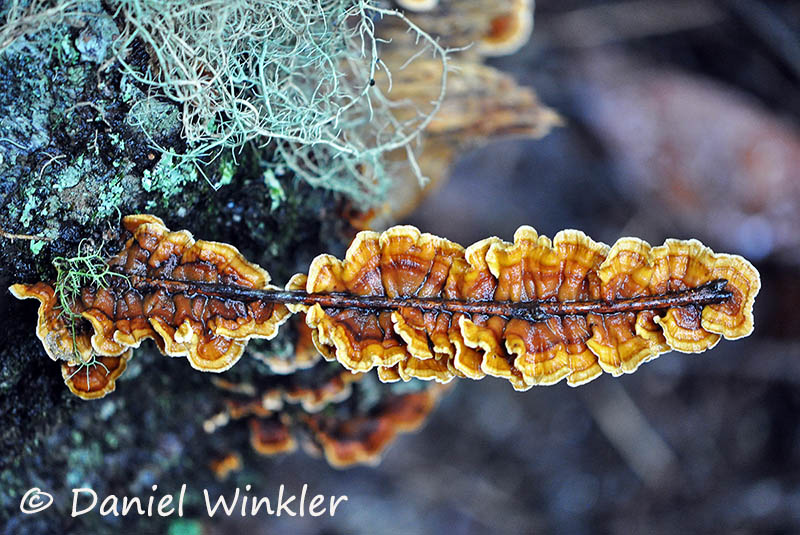
A Stereum sp. soaked by the rain. What a special pleasure, getting soaked to the bone in a forest that had been deprived of rain for many weeks.
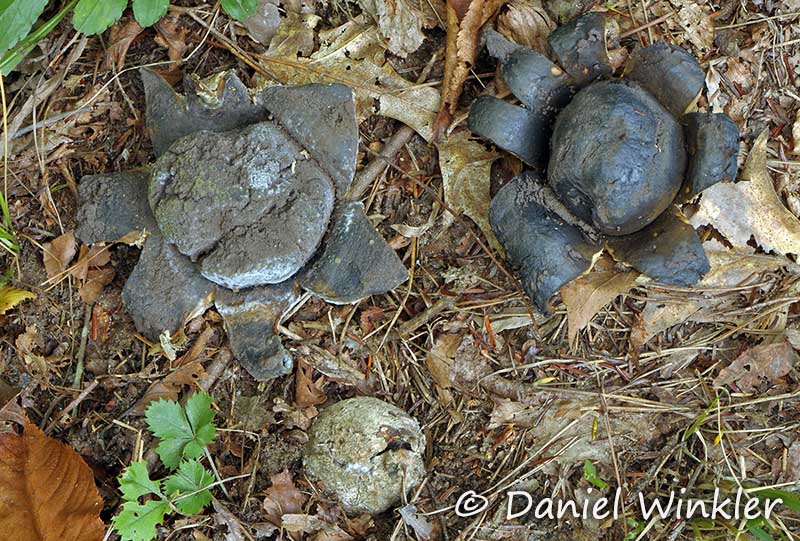
Scleroderma polyrhizum, Dead man's hand or Star earth ball, could be mistaken for Earth stars (Geastrum et al.). Especially these specimens that still hold their dusty gleba in the center, a rare occurrence only to be observed in long draught periods, otherwise a drop of rain will destroy the gleba ball. Seen near Asheville NC.
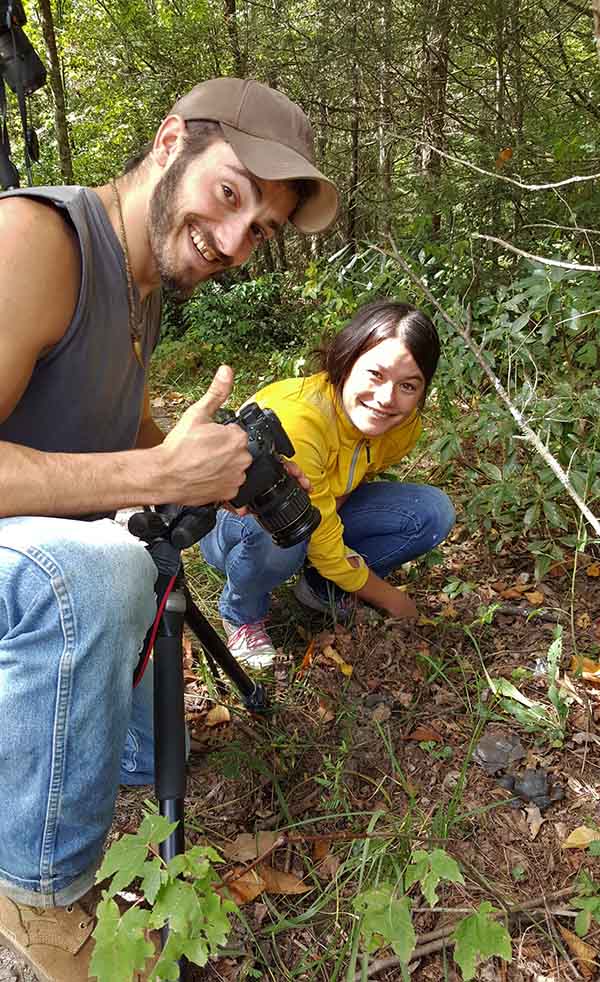
Fellow fungal enthusiasts Todd Elliott and Camille Truong marveling at Scleroderma polyrhizum.
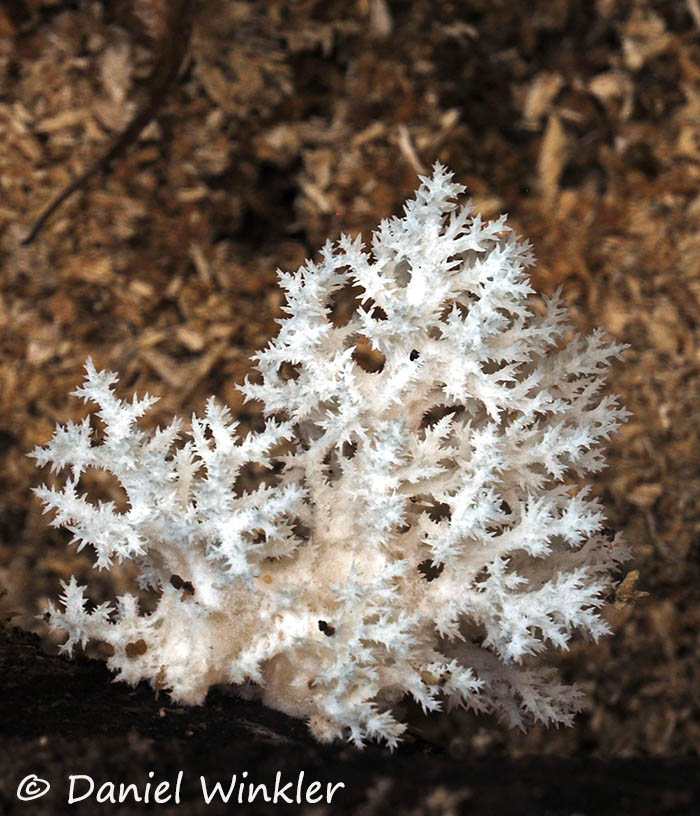
A very young Hericium coralloides, the Coral Lion's Man, a great tasting wood decayer.
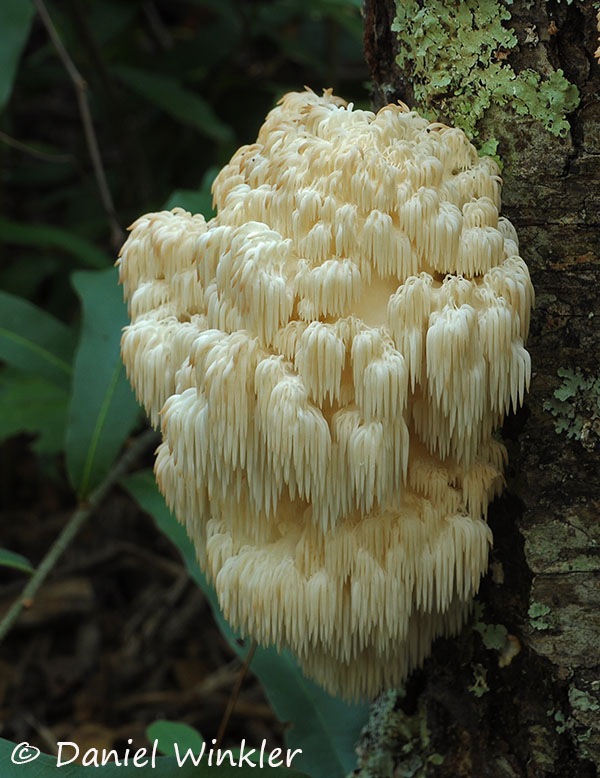
Hericium americanum, a beautiful lion's mane, cultivated in the woods of Mushroom Mountain. It is a great edible with gorgeous structure.
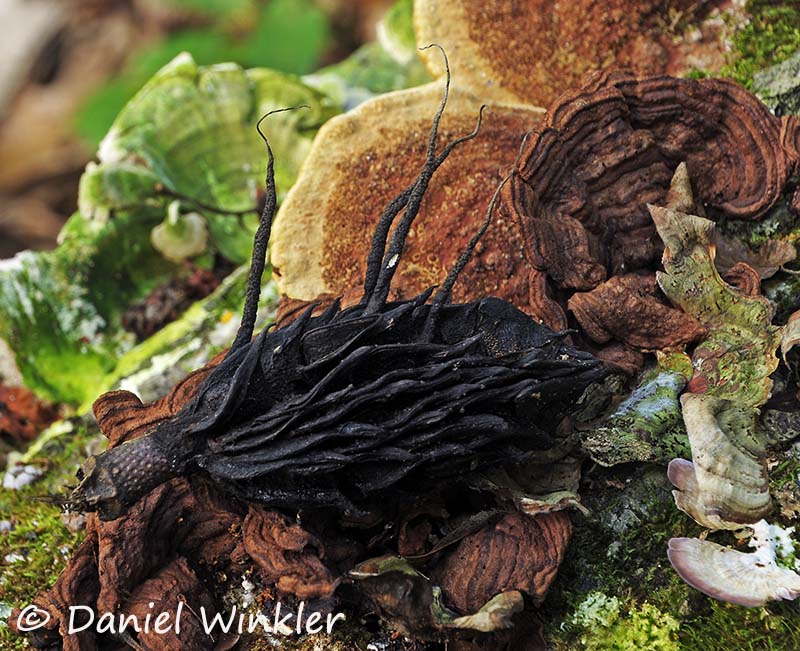
Black fruiting bodies of Xylaria magnoliae growing from the black seed of a Magnolia seen in Union Mills, NC. Some Xylaria-species are very host specific, others like the very common Xylaria hypoxylon, known as Carbon antlers or Stag's horn fungus has a very wide range of host, all kind of decaying wood.
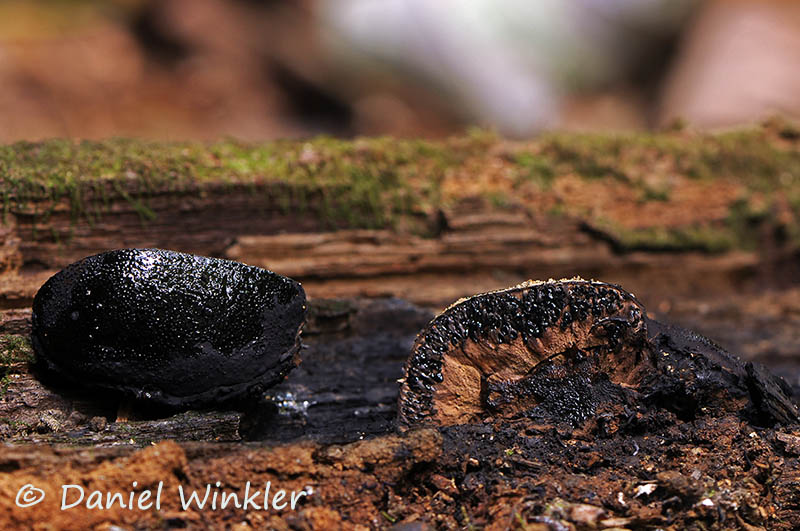
Annulohypoxolon sp., a Xylaria relative growing on a downed hardwood in Asheville NC.
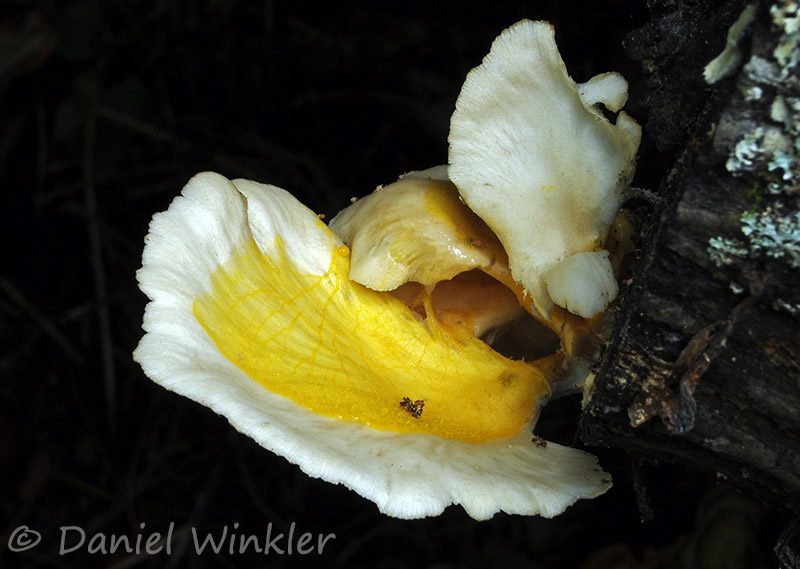
An oyster mushroom (Pleurotus sp.) under attack by an slime mold.
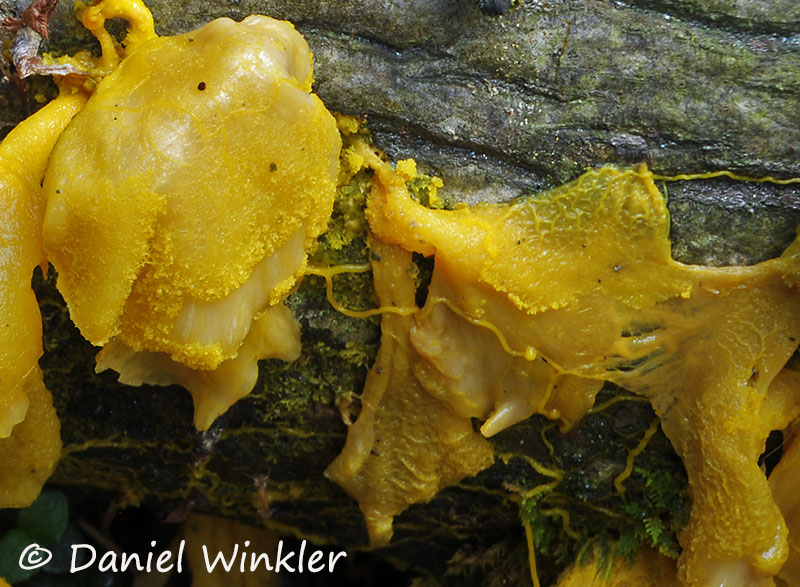
Here a close up of the same slime mold action that nearly finished up digesting the oyster mushroom. It is probably Physarum polycephalum. but there is a slight chance it could be Badhamia utricularis.
I love these supply chain veins! When I see them, to quote Lou Reed: "Then I tell you things aren't quite the same".
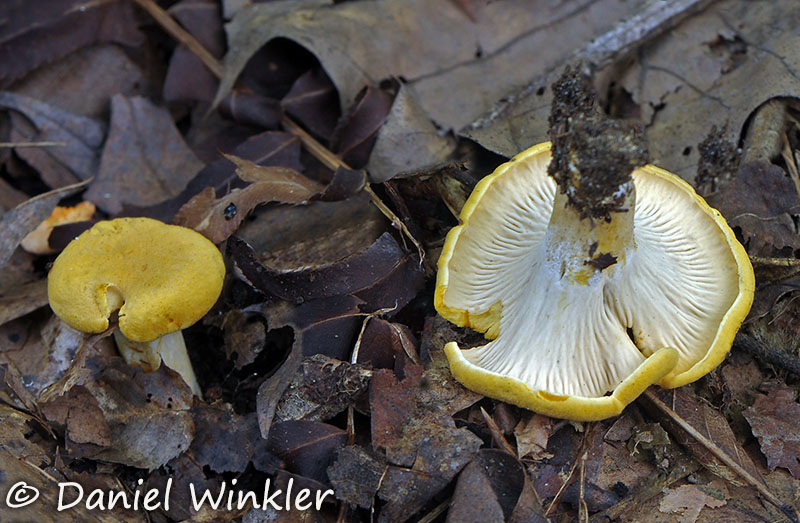
Possibly Cantharellus lateritius, the Smooth Chanterelle encountered in Union Mills NC. Often the hymenium is smooth and in age shallow gill-like folds develop.
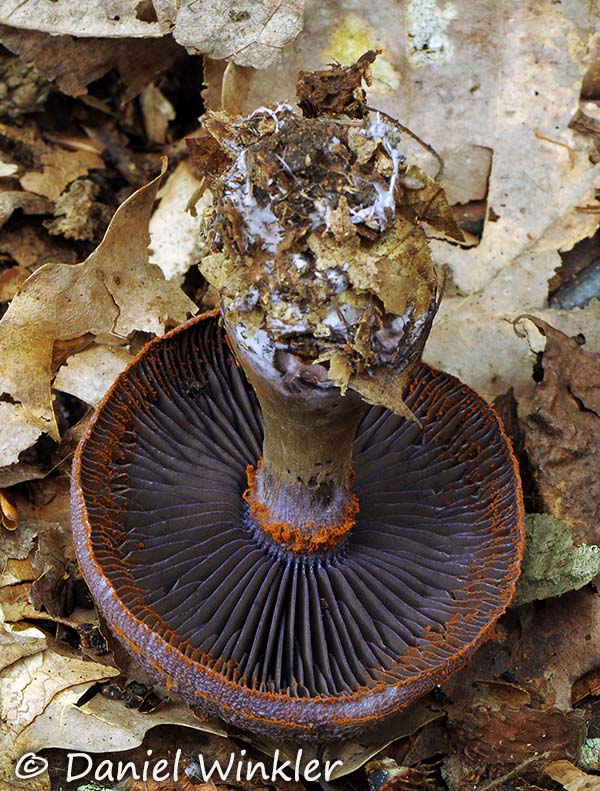
A Cortinarius, whose rust brown spores are caught by the sticky remnants of the spider web like partial veil.
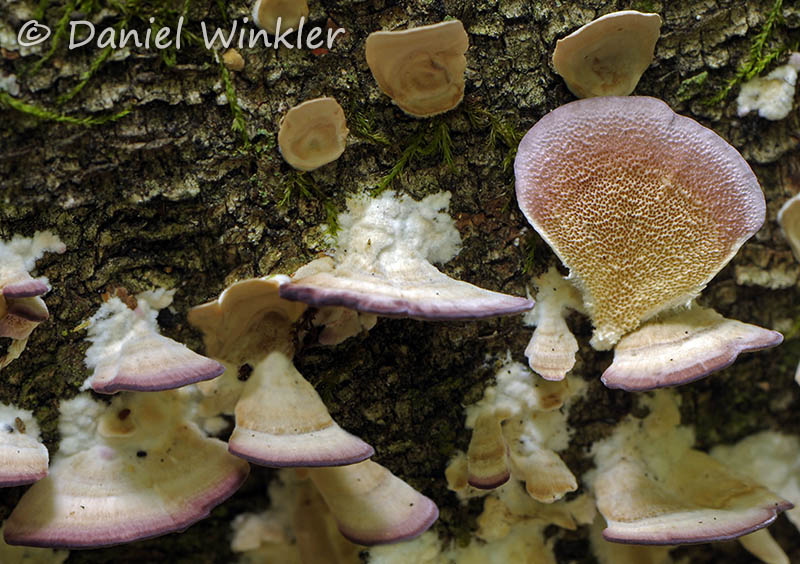
Trichaptum biforme, the Violet toothed polypore, is a beautiful hardwood decayer showing its typical purple edges of young tissue.
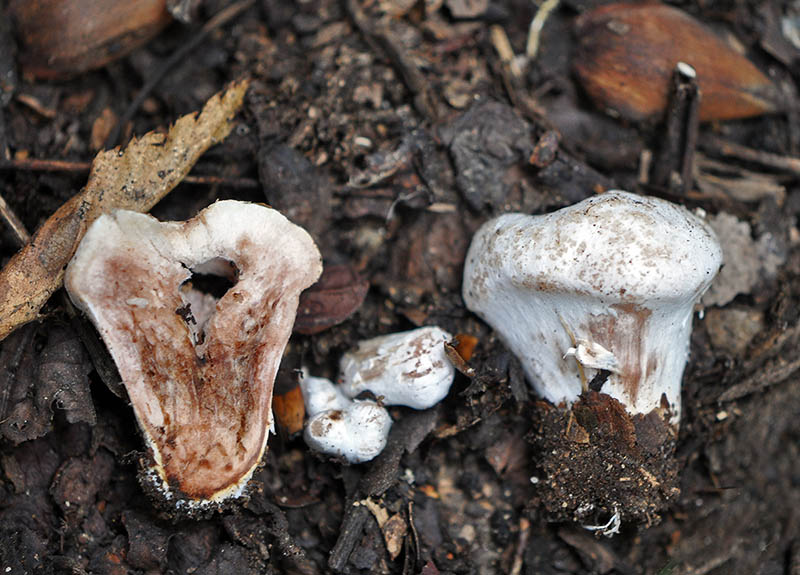
Entoloma abortiva, an edible, but strange mushroom. It is not always clear if it is an Entoloma parasitizing a member of the honey mushrooms (Armillaria mellea gr.) or vice versa.

Hygrophorus russula, a waxgill that looks a lot like a Brittle gill (Russula). With age the gills turn red. The red oozing is caused by insect activity. In Tibet and Bhutan a mushroom with the same name is eaten frequently.
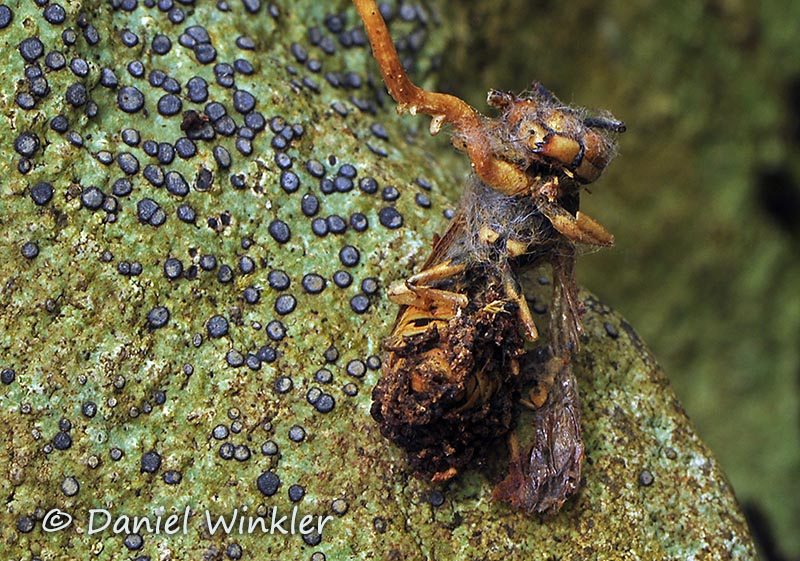
A wasp killed by the insect parasitizing fungus Ophiocordyceps sphecocephala. Out of the thorax grows the base of the stroma, the fungal fruiting body. The whole insect-fungus complex and many other Cordyceps images are uploaded at my Cordyceps and allies seen in the Carolinas blog entry.